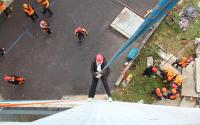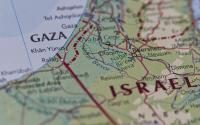8 September 2007Kansas City.comJack Chang
 Many Brazilian farmers and ranchers use a slash-and-burn method to clear parts of the Amazon rain forest. About 70 percent of deforested land in Brazil is used for grazing.
Many Brazilian farmers and ranchers use a slash-and-burn method to clear parts of the Amazon rain forest. About 70 percent of deforested land in Brazil is used for grazing.
When Pereira needs more land for his crops and cattle, he cuts more virgin jungle and sets the vegetation ablaze. When the nutrient-poor soil has been depleted, he moves on and cuts down more jungle.
Such slash-and-burn agriculture has helped Pereira, 51, and millions of other farmers and ranchers scratch out a living from the forest, but it has put Brazil at the heart of the environmental challenge of the century.
As vast tracts of rain forest are cleared, Brazil has become the world’s fourth-largest producer of the greenhouse gases that cause global warming, after the United States, China and Indonesia, according to the most recent data from the U.S.-based World Resources Institute.
And while about three-quarters of the greenhouse gases emitted around the world come from power plants, transportation and industrial activity, more than 70 percent of Brazil’s emissions comes from deforestation.
Burning and cutting the forest releases tons of carbon dioxide, methane and other gases that the vegetation had trapped. Those gases collect in the atmosphere, prevent heat from escaping and help raise the Earth’s temperature.
Keeping greenhouse gases out of the atmosphere has become crucial to saving the planet from catastrophic climate change, scientists say. However, stopping the destruction of the vast Amazon rain forest means confronting lawlessness and persuading Brazilians to leave the forest alone.
“Brazil has a huge amount of forest that’s still there, and that means Brazil has a much greater role in terms of future deforestation,” said Philip Fearnside, a research professor at Brazil’s National Institute for Amazon Research. “Any changes that happen here have great influence on whether the Earth gets warmer.”
The 1.5-million-square-mile Brazilian Amazon, larger than India, contains more than 40 percent of the world’s rain forests, and about a fifth of it already has disappeared, mostly in an “arc of deforestation” along the forest’s southern and eastern edges.
The effects of the Amazon’s continued destruction could be especially severe in southern Brazil, where much of the country’s agriculture, industry and population are based. About 40 percent of the precipitation there comes from moisture evaporated off the rain forest’s tree cover. Cutting back more of the Amazon could mean starving the area of water.
Veteran diplomat Sergio Serra, Brazil’s first ambassador in charge of global warming issues, said his country is doing its part by, among other things, strengthening enforcement of environmental laws and creating vast forest reserves.
As a result, he said, the rate of deforestation in the Amazon dropped by about 50 percent from August 2004 to July 2006.






